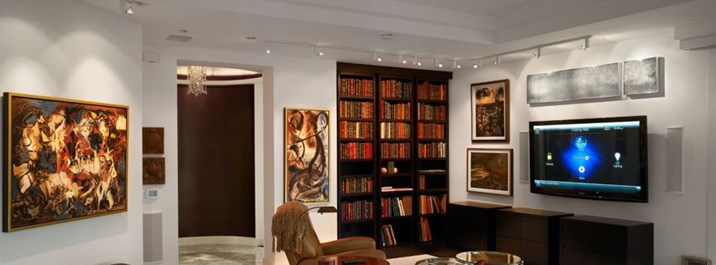5 Energy Saving Methods to Incorporate Into Your Home Automation

Home automation from Wipliance can mean serious energy savings when items like lighting and temperature control, electronics, appliances and more can be controlled remotely or scheduled to perform at energy efficient times, or based on a preset schedule. The options are endless!
Here are some of the top ways Smart Home owners are benefiting from the energy savings of their home automation systems:
Automated Lighting & Temperature Control
Lighting is essential to our everyday living, not only for our comfort, relaxation and enjoyment, but also for our productivity, significantly influencing how we perform – at home and at work. We, as consumers, may not consider the advantages of generated and natural light and how we can harness the natural light to save energy. However, it is an area which is continually being developed and enhanced by cutting edge companies like Lutron and Control 4 who are consistently investing in innovation to enable us to include sophisticated, energy efficient and environmentally sensitive options in our homes and workplaces. As well as enhancing our environment, lighting control and home automation can help save energy and reduce energy bills.
Not so dim!
One of the easiest and most effective ways to save energy is to install dimmers. Lutron Electronics (who invented the original dimmer) produces a range of dimmers and all of these will save energy and cut bills. The science behind a typical dimmer is relatively simple. An electronic dimmer component turns the light on and off very rapidly – too fast for the human eye to detect. When the light is off, no energy is being used. The longer the component is off, i.e. the more the lights are dimmed, the lower the light output and the greater the energy savings.
Turn it off if you’re out!
It’s all too easy to leave a room, or the house, especially on a bright summer day, with the lights left on… particularly if there are several people who share the space, perhaps some of who are less conscious of the bills than others! Wireless occupancy sensors can be used to great effect to detect and react when a room is empty and unused, turning lights off when spaces are vacant. Sensors can also automatically dim lights when enough daylight is present or use automated window shades, with the system adjusting electrical light levels so that the right amount of light is always present. And this sort of energy conscious light management system can be set up in a single room or an entire building saving significant wastage and costs.
Lighting control solutions offer scene settings that support the task being undertaken in that space – entertaining, working, relaxing, cooking etc. Selecting a lighting option to suit how we use our space makes us think about the lighting, so we adjust it more frequently, selecting scene settings with dimmed lighting and turning off when not required.
Different lights – different inefficiencies
Also relevant to energy consumption is that certain types of light source are more efficient than others; for example LED lighting which offers a longer life with bulbs and diodes offering an outstanding operational life time expectation of up to 100,000 hours. This is 11 years of continuous operation, or 22 years of 50% operation.
With traditional incandescent light bulbs operating at 20% energy efficiency only, 80% of the electricity is lost as heat. The long operational life time of LED acts as a duplicator and helps achieve even more energy efficiency, so you can make significant energy savings.
Lighting Control products from companies such as Lutron and Control 4 provide solutions for dimming very low watt LED lighting so you can achieve the desired ambiance but at a fraction of the operational level. Wipliance is proud to be a platinum level dealer for Lutron Electronics and a certified dealer and installer for Control4 automation systems.
5 Energy Saving Methods to Incorporate into Your Home Automation:
-
Scene setting with lighting control will enable you to create the desired atmosphere for working, relaxing or entertaining at the touch of one button – by thinking about how you use the lighting, you avoid leaving all the lights on and all the lights are functioning at a dimmed level so you save money on energy and extend lamp life!
-
Remote Access Control, so you can turn off all your lights off from your mobile phone or tablet.
-
Automated blinds can help you manage the temperature in the house – keep heat in the winter and keep the space cool in the summer.
-
Programmable heat thermostats can help you manage the temperature more effectively in your home or workplace, whether you are there or away. Nest, with its built in sensors, knows when no one is home, so Nest’s Auto Away feature can automatically turn down the temperature, saving more energy.
-
Automatically turn on appliances like dish washers at the most energy efficient times using a home control solution like RTI or Control 4.

